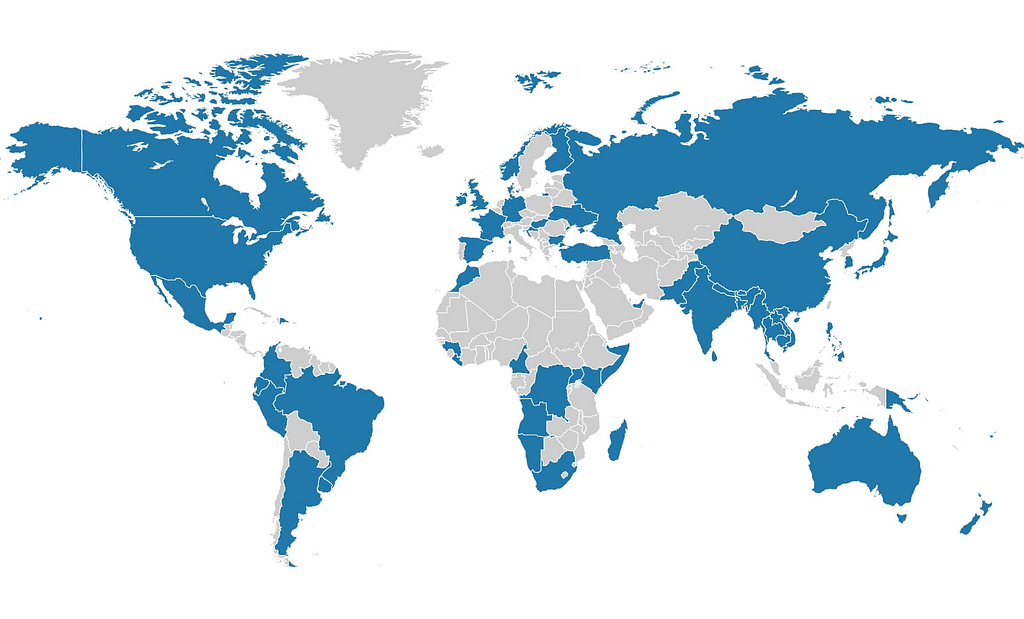Nature-based solutions can help reduce emissions by one-third by 2030 if investment triples during that time. The Nature-Based Solutions Policy Tracker, launched by Metabolic and partners at COP26, can help governments and investors better target their policies and funding.
Using nature to bring climate change under control is a dominant theme this week at COP26, the UN Climate Change Conference in Glasgow. From Cameroon to Vanuatu, governments are examining how nature-based solutions can help in this critical effort.
At the annual conference, Metabolic and our partners launched a new AI-based tracker to raise awareness of nature-based solutions and increase ambition by showcasing effective policies worldwide. The Nature-Based Solutions Policy Tracker will help governments and financial institutions learn from best practices, understand investment needs and opportunities, and make smarter use of resources.
“The NBS Policy Tracker is just the tip of the iceberg in terms of what is possible,” said Louisa Durkin, sustainability consultant and the project lead at Metabolic. “As the world faces unprecedented environmental challenges, it is increasingly important to include nature in our policy decisions, for both climate and biodiversity goals. With this tracker, our goal is to accumulate more and more examples of relevant government action, which can inspire and influence better decisions around the world.”
While there are other climate policy trackers available, none are focused on nature-based solutions, Durkin said during a launch event at COP26. Because these solutions are a critical part of the nationally determined contributions (NDCs) at the heart of the Paris Agreement, they need more visibility. Just 32 countries mention nature-based solutions in their national targets, while 128 NDCs reference the land-use sector.
“What we wanted to do was take the science that everyone’s seen, and then look at the case studies that we know are happening on the ground,” said James Lloyd, director of the Nature4Climate coalition. “So this isn’t a debate about definitions. This isn’t a debate about whether we like the word nature-based solutions or natural climate solutions. It’s a debate about what’s actually happening, and it is happening on different levels. It’s about driving quality at scale and speeding it up because we’ve got until 2030. We need to do this right the first time. We haven’t got a chance to go back and do this twice.”
The database will be updated annually over the next three years, and it will ultimately be incorporated into The Nature Conservancy’s and Nature4Climate’s Natural Climate Solutions (NCS) Action Mapper. This platform will put detailed scientific, financial, and contextual information for different strategies at the fingertips of decision-makers.

To find these successful policies that could inspire other countries, investors, and organizations around the world, Metabolic turned to artificial intelligence to search millions of web pages. Along with our AI partner Arboretica, our researchers set up algorithms to scan for references to nature-based solutions in association with keywords on legislation and/or funding. After yielding hundreds of thousands of results, the team did additional qualifications followed by manual validation to feed back into the system. After three or four rounds, the system grew smarter.
Our researchers identified six science-based criteria to determine the aspects responsible for the success of NbS, including if a policy had a clear budget, monitoring plan, and KPIs, included inclusivity and Indigenous Peoples and Local Communities, and prioritized protecting ecosystems. “We’re not measuring outcomes,” Durkin said. “We’re just measuring good policy and luckily, there is a lot of science on what good nature-based solutions look like. Rather than saying what is a good policy or a bad policy, we are more objectively saying they are meeting or not meeting that criteria based on our research.”
Ultimately, the tool identified more than 220 policies from 80 countries. As the tracker continues to expand in the coming years and expand to non-English searches, these numbers should grow. The most common focus among these solutions was coastal restoration, mentioned in 13.6% of policies, followed by tackling deforestation (11.4%), community-led conservation (10.8%), and reforestation (10.4%). We also could see areas where work needs to be done. In terms of agricultural solutions, our team found that governments are not acting on the available potential solutions. The search found very few references to policies to protect and establish healthy soils, regenerative agriculture, and “carbon farming” practices.

While the methodology for creating this tracker is novel, it is the best practices and “lighthouse policies” that our team found that will help shape future policies and investments toward NbS.
For instance, 90% of the policies recognized the importance of multi-stakeholder involvement. “If it is one government agency or one group coming up with a policy, it is probably not going to be very successful without input from others and [joint] ownership,” Durkin said.
Additionally, 67% had allocated budgets. “We are really, really looking for policies that are funded,” Durkin said. “It is very important to see where the money is going and who is getting financed, and investors need to know where to spend their money and what is effective.”
For instance, Fiji’s National Development Plan (2017) is an overarching development plan that includes a focus on climate change mitigation and nature-based solutions in agriculture, forestry, and fishing, with a clear timeframe for implementation. With a US$50 billion budget dedicated to the development plan, this policy has a clear goal of preserving Fijian cultural heritage and safeguarding Indigenous knowledge. Nature-based solutions are present in the policy, including mangrove restoration, forest conservation, and improved rice harvesting.

Kenya’s Climate Smart Agriculture Strategy (2017 – 2026) is another lighthouse policy, as it harmonizes agriculture, development, and climate change objectives under a single, cohesive policy addressing climate-smart agriculture. It has a budget of $5 billion to enable agricultural NBS, including integration with Indigenous knowledge.
These policies, and others identified in our report, provide much-needed examples to learn from. Nature-based solutions can provide about 30% of the greenhouse gas emissions reductions needed by 2030 to meet the Paris climate target, but the sector only receives 8% of public climate finance.
“Nature is a key ally,” Sir David Attenborough said during the opening of COP26. “Whenever we restore the wild, it will recapture carbon and help us bring back balance to our planet… We must use this opportunity to create a more equal world, and our motivation should not be fear, but hope.”




